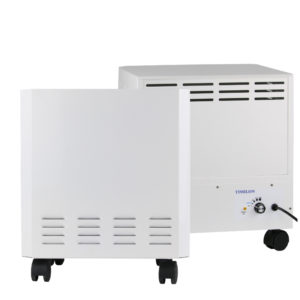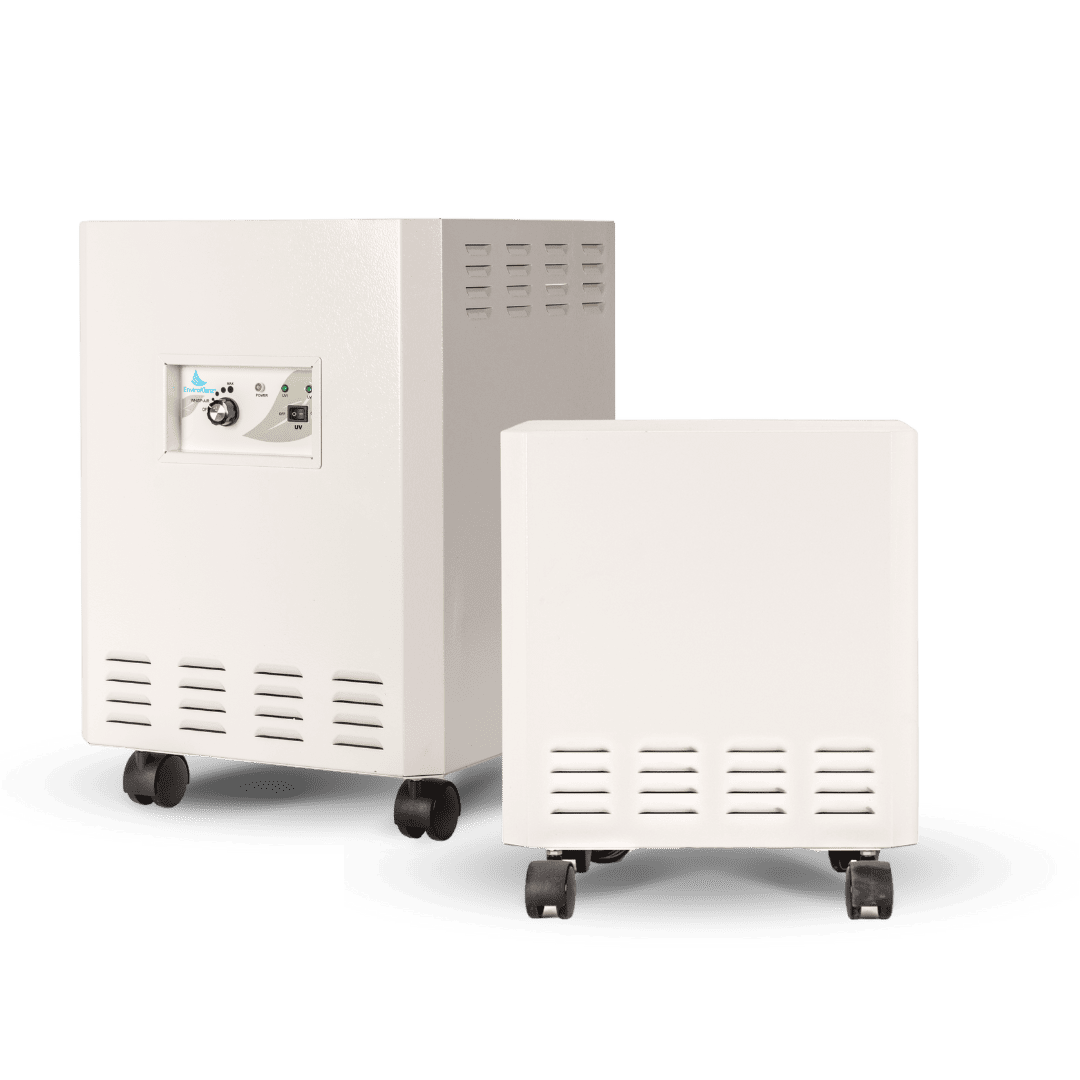Did you recently purchase a new piece of furniture for inside your home, but upon the arrival of this new décor your home has never smelled the same? Whether it’s a new piece of furniture, the installation of new flooring, or even a fresh coat of paint, it can leave your home with a very distinctive odor that will most certainly be noticeable to anyone in the environment. Some manufactured goods like furniture, flooring, and paint can taint the environment with an unpleasant odor that can linger in the air for a long duration after its arrival into the living space.
The cause of this developing odor inside your home from the new manufactured materials is a process that is commonly referred to as off-gassing. This process occurs when new products are brought into an indoor environment and begin to release potentially harmful chemicals into the air. Sounds dangerous, right? Well, it can be and the effects on both the indoor air quality and on the health of those exposed to this off gassing can be significant.
Below we are going to learn more about the off-gassing process, how it compares to outgassing, and how you can mitigate these toxic chemicals from your air after off gassing commences inside your home.
The Difference Between Off Gassing & Outgassing
Two interchangeable words, outgassing and off gassing essentially mean the same thing, but you will commonly hear manufacturers use outgassing when referring to the off-gassing process of materials. However, both outgassing and off gassing both describe the release of harmful gases into the air from trapped in manufactured products and materials during production. When speaking about indoor air quality, off gassing is the term that is more commonly used, whereas outgassing will be more commonly used in industrial or lab settings.
What is Off Gassing
As we discussed earlier, off gassing is the process of manufactured items in a home releasing volatile organic chemicals (VOCs) and other chemicals into the air, which can lead to a strong odor in the air that will be noticeable to those in the environment. The volatile organic chemicals (VOCs) that are released from these items are possibly hazardous to human health upon exposure, as they will turn into a gas and be released into the air making it easy for those individuals in the environment to inhale or ingest these chemical pollutants.
The Environmental Protection Agency (EPA) estimates that VOC concentrations in indoor environments is typically more polluted than that of outdoor air, with pollutants usually two to five times higher than outdoor air. And because of the high volumes of VOCs used in the manufacturing process, a wide variety of products will be sources of VOC emission inside a home.
Symptoms of Off Gassing
Exposure to VOCs and other chemicals that are emitted during the off-gassing process can have potentially significant health effects. From short-term to long-term health effects, each individuals’ symptoms will vary and can elicit different symptoms. The severity of symptoms will depend on a variety of factors including the type of VOCs in the air, the concentration and level of VOCs, and the total length of exposure to these VOCs. Acute health effects from VOCs can include headaches, nausea, eye, nose, and throat irritation; in contrast, the potentially significant health effects that someone may experience can include damage to the kidneys, liver, or nervous system – even some forms of cancer can develop from exposure.
Symptoms of VOC exposure can include the following:
- Nausea
- Sore throat
- Headaches
- Difficulty breathing
- Skin irritation
- Fatigue
- Dizziness
Sources of VOCs in a Home
VOCs are very discrete chemicals that can come from the least suspected of sources. The potential sources of VOCs inside a home can vary from flooring, paint, furniture, and even household cleaning products that can allow for the entrance of VOCs inside your indoor air space. Even if you look for alternatives of these products that are labeled ‘green’ or ‘all-natural’, the likelihood of VOCs being present in these materials is still highly likely, which will leave you with a surprising level of VOCs inside your home. However, as we as consumers become more informed about VOCs and the sources of it inside the home, you will be able to effectively counteract these VOCs and mitigate them from the surfaces and air inside your home.
Carpeting & New Carpet Smell
Carpeting and the installation of this inside your home can produce a strong odor that will emit throughout the whole environment, the smell is one that is commonly associated with ‘new’ such as new car smell. However, the smell may be way stronger than that of new car smell and it can last inside the home for a long duration of time, which some will find completely unbearable. What exactly is this new carpet smell? The smell is actually an emission of VOCs and chemicals from the carpeting and the adhesives/glues used during the installation process. During the manufacturing of carpeting there are several different chemicals used that once they become acclimated into room temperature will turn into a gas and begin off gassing into the air of the indoor space.
New carpeting will give off the VOCs for several days, and sometimes even weeks in some cases. Typically, the worst emission of VOCs into the air is the first couple days after installation occurs (1-2 days).
Furniture
Furniture is often made from many different types of materials and some of these materials will be manufactured with an array of potentially hazardous chemicals that will enter into your indoor environment. Wood products contain a dangerous chemical formaldehyde within its construction that is known to be a highly irritating chemical to the respiratory system and is also identified as a carcinogen. Also found in many furniture pieces, particle board and plywood are known to have a higher concentration of VOCs due to their porous nature, which will lead to a high number of VOCs released into your personal indoor environment from the furniture.
Mattresses
A very unlikely culprit for VOCs and off gassing that many people would never think about is that new mattress that you just purchased. Many mattress companies have dived into online bed deliveries that will reek of chemicals upon the first opening of the box and unfolding of the mattress. Mattress companies use high levels of VOCs within the manufacturing process which will promote the off gassing when the mattress arrives inside your home, this is from the foam and adhesives used in the mattress. Parents particularly should take special care when purchasing a mattress for their baby’s crib and in general consumers should be on the lookout for a nontoxic, VOC-free mattress for their home to reduce VOC exposure and potential health effects.
How to Get Rid of New Carpet & Furniture Off Gassing

The best way to speed up the off-gassing process and mitigate the amount of off gassing inside your home is to look for products that are VOC-free or that have a reduced number of VOCs within its composition. This would be the ideal way to prevent VOCs inside your home, but unfortunately this can be a rather expensive method as these products will most likely be top dollar items. If you cannot avoid purchasing items that contain VOCs, then it may be necessary to invest in a top of the line VOC air purifier that will eliminate these hazardous chemicals from the air.
The EnviroKlenz Air Purifier is a top of the line air purifier for VOC elimination. The EnviroKlenz patented earth mineral technology works by adsorptive neutralization which allows the minerals to break down and eliminate the chemicals odors, fragrances, and VOCs in the air. Once the VOCs come into contact with the high surface area earth mineral filter, the minerals will neutralize and/or break down the chemicals completely – this eliminates the worry of these VOCs becoming re-released back into the environment overtime as the filter fills, like carbon filters.
The EnviroKlenz Air Purifier also comes equipped with a hospital-grade HEPA filter for particulate removal larger than 0.3 microns in size, giving the purifier a two-stage filtration. Overall, EnviroKlenz is relentless at removing the harmful airborne contaminants from your air, and leaves you without the worry of fragrances, chemicals, or byproducts being left in or created in your personal indoor air.
EnviroKlenz Air Purifiers are highly effective against VOCs and does a rapid job of neutralizing and eliminating these hazardous chemicals from the air.
Below is testing that was conducted to show the effectiveness of EnviroKlenz against Volatile Organic Chemicals (VOCs).
In this chamber study, a volatile organic chemical was released in an environmental chamber under ambient conditions. The various air systems and technologies were remotely controlled to not disturb the environment. The IQAir was the air system that was able to remove the chemical the quickest, but since the system uses carbon media, the chemical has the potential to be released back into the atmosphere with an increase in temperature or changes to humidity and pressure. In some of our real-world evaluations, we have seen carbon systems start to desorb VOCs as the temperature rises towards only 80 degrees.
The EnviroKlenz Air Purifier out performed the Blue Air and MoleKule system, while also offering more than just physical absorption. The EnviroKlenz Air Cartridge works though a combination of physical and chemical mechanisms.









